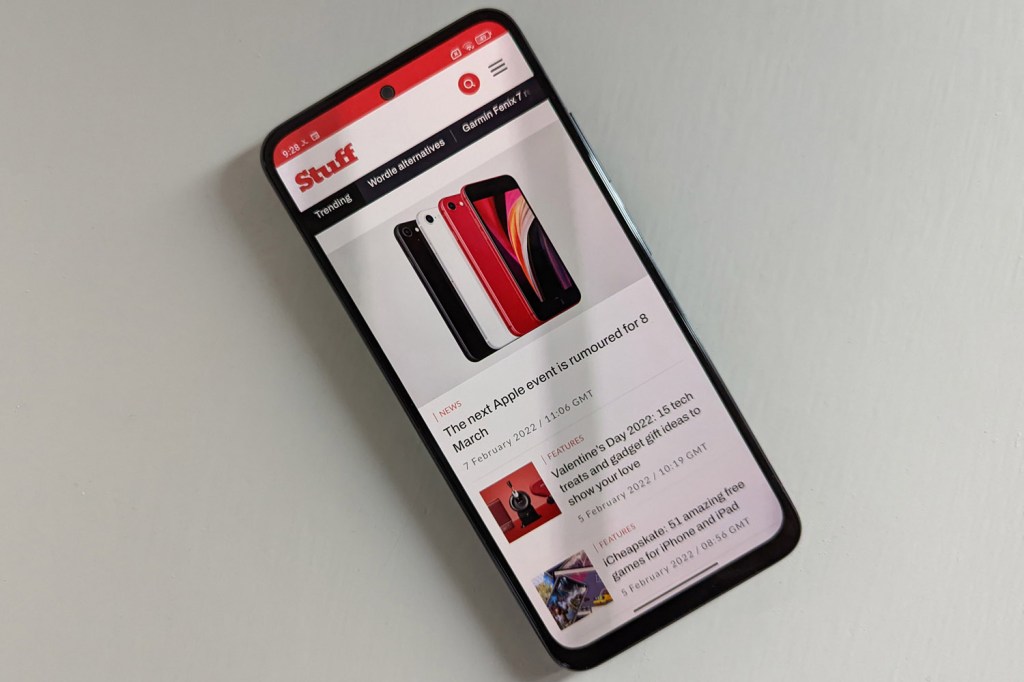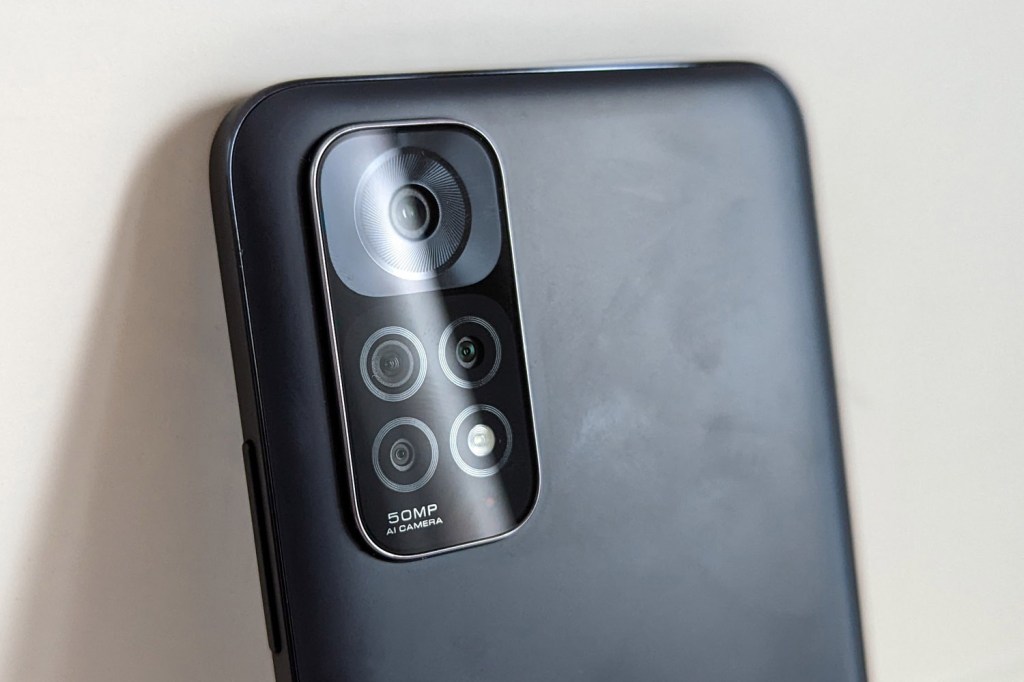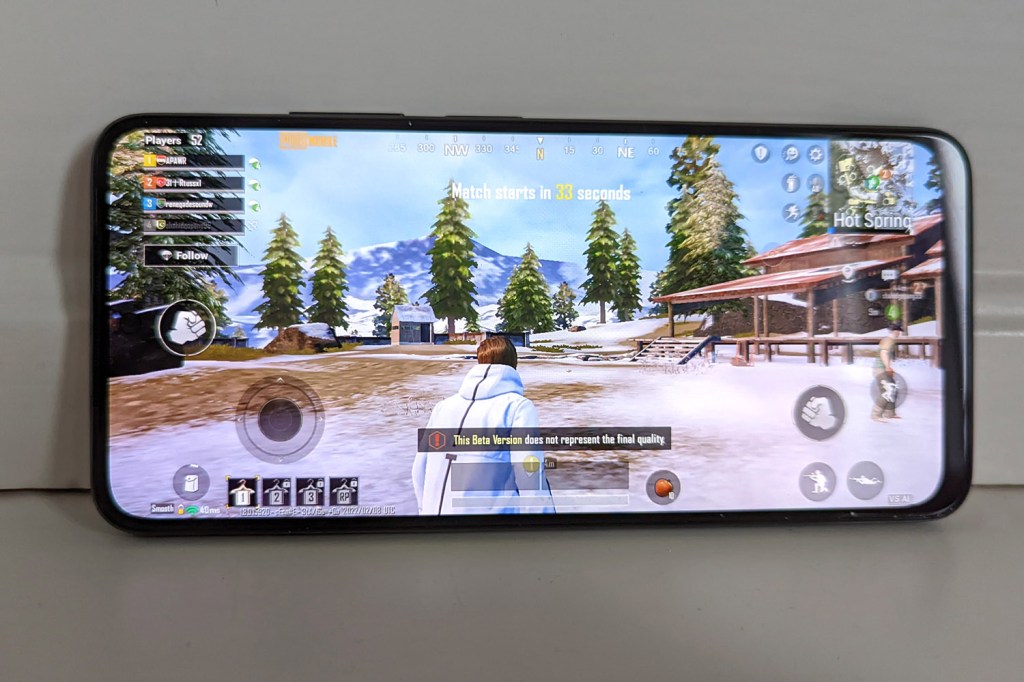Redmi Note 11 review: capable for the price, but do you want more?
Noteworthy for more than just its low price?

The Note 11 might just be peak Redmi: think surprisingly capable hardware at not quite back-of-the-sofa money, and available in more tiers than a wedding cake.
Xiaomi’s latest value line-up includes (deep breath) the Note 11, Note 11S, the Note 11S Pro and the Note 11S Pro 5G. They’re all pretty similar, but with better connectivity and camera smarts as the price creeps up.
The vanilla Note 11? It’s the baby of the bunch – but not by a lot. You still get a high refresh rate OLED display, 50MP main camera and Snapdragon silicon, making it a tempting proposition for someone on a budget.
Design and features

Ignore the screen bezels, which are a little on the chunky side, and the Note 11 does a great impression of a pricer handset.
It’s reasonably svelte, with flat sides and a matte finish that create a bit of an iPhone vibe, only with a slight curve at the back so it better sits in your hand. The rear lens array doesn’t bulge out too dramatically, and while you won’t mistake the plastic finish for glass or metal, it does a reasonable job of hiding smudges.
The physical fingerprint scanner built into the power button is quick to pick up your digits, there’s a 3.5mm headphone port so you don’t need to faff around with dongles or pricey wireless earbuds, and there’s even IP53 dust and water protection. It won’t take a dunking like a flagship phone, but should shrug off a splash or two.
The merely average 64GB of on-board storage will fill up fast, but it’s great to see a microSD card slot for adding more capacity later.
Display and sound

Getting a 1080p-and-a-bit AMOLED screen at this price is pretty rare – and it’s even rarer to find one that also has a 90Hz refresh rate. It’s not quite as silky as a 120Hz flagship, or even the slightly pricier Note 11 Pro 5G, but still makes for smoother scrolling through social media or swipes across multiple home screens.
The Note 11’s 6.43in panel is a sensible size; big enough to pack in plenty of detail courtesy of the 2400×1080 resolution, but not so massive simply using it becomes a chore. It can get mighty bright, too, so you should have no trouble seeing what’s on screen when you step outside. Proper HDR support didn’t make the cut, though.
Viewing angles are great, and it delivers the excellent contrast and vibrant colours we expect from OLED. Colour accuracy is good enough for a budget phone, if just a little too vivid out of the box. A good job there are multiple colour modes and a white balance adjuster for personalising the overall look of the display, then.
The stereo speakers are just as noteworthy, delivering impressive volume and a balance that isn’t too heavily weighted in either direction. Really crank it up and things start to distort, but stick to three quarters of max and you won’t be too disappointed given the budget nature of the phone.
Camera

Four lenses on a sub-£200 phone can only mean one thing: macro and depth-sensing abilities that aren’t really worth writing home about. That was true of last year’s Redmi Note 10, and it’s the same here. At 2MP apiece, they add little to the Note 11’s appeal.
Don’t expect great results from the 8MP ultrawide, either. It’s handy to have when trying to squeeze every bit of a scene into frame, but results appear very soft in good light and particularly poor at night.
The 50MP main snapper, on the other hand, is a small step up over the Redmi Note 10’s 48MP unit, with fairly speedy phase-detect autofocus and a 2x digital zoom that’s decent enough for a cheap handset. Feed it plenty of light and the level of detail on show can be up there with the best budget phones, with close-ups producing convincing bokeh. This clarity rapidly drops off in darker conditions, though.
Colour accuracy and white balance are very inconsistent, with some scenes looking unnaturally cold while others appear fine. Dynamic range is rather disappointing, even with auto HDR enabled, which can leave some images looking rather flat.
It’s a similar story for the front-facing snapper, which can deliver detail and fairly accurate colours in good light, most of the time, but as soon as it gets dark your images lose any semblance of clarity.
Performance

Budget handsets don’t always get the latest hardware, but the Note 11 is rocking an all-new Snapdragon 680 CPU. New doesn’t always mean better, of course; while the 6nm silicon promises big efficiency gains over the outgoing Redmi Note 10, performance isn’t improved across the board.
The 2.4GHz, octa-core chip can’t always handle Android as smoothly as you’d expect, with occasional stuttering, a sluggish response to taps, and app load times that are merely respectable. You’ll have time to twiddle your thumbs when opening more demanding software, and the limited 4GB of RAM means apps reload regularly when multitasking.
This isn’t a gaming phone, unless you count text puzzlers like Wordle or old favourites like Clash of Clans. 3D titles like PUBG show significant texture pop-in and struggle to deliver smooth frame rates, even with the details settings dropped way down.
Where the Note 11 claws back some ground is with battery life. A sizable 5000mAh battery, 90Hz display and efficient CPU add up to impressive longevity, making it something of a weekend warrior – especially with 33W wired charging letting you juice up in around an hour. And yes, the charger does come bundled in the box.
In general use, we comfortably lasted a full day, and still had power to spare the next morning. Only Netflix bingers and social media addicts should have any problems lasting from morning until night without having to top up.
OS and software

All Redmi phones use parent brand Xiaomi’s take on Android, MIUI, which has now hit version 13. It’s one of the more heavy-handed takes on Google’s OS, with a lot of visual inspiration taken from Apple, which can be confusing for Android die-hards.
Take the notification tray: swipe on the wrong side of the screen and you’ll bring down the iOS-like Command Centre instead of whatever app alert has just landed. Aggressive battery-saving can also be a real killer, forcing apps into hibernation in a way that can prevent them from receiving new push notifications. Thankfully you can turn a lot of these features off, but it takes a bit of digging.
There’s a sizable list of pre-installed apps or download shortcuts, which not everyone will appreciate. We’ll give Redmi a pass for Spotify, Facebook, Netflix and Amazon shopping, which a lot of users are likely to download anyway, but AliExpress isn’t all that useful here in the UK.
Verdict
The Note 11 is a great example of something that looks great on paper, but isn’t quite so impressive once you start using it.
Sure, Redmi has packed in plenty of hardware for the price, but the combo of budget-leaning CPU and overbearing software make for constant reminders you’ve bought an entry-grade phone. And ultimately, it doesn’t massively move the game on from last year’s Redmi Note 10.
Its bigger brothers don’t cost a whole lot more, but gain extra goodies like 120Hz refresh rate, even faster charging and a beefier CPU. The addition of 5G support should help those handsets stay relevant for longer, too.
Anyone on a truly tight budget that needs a new phone ASAP could make a case for the Note 11, but if you can save a little more cash, there are plenty of snappier rivals to choose from.
Stuff Says…
A capable budget handset let down by at times sluggish performance and flaky software. You get a lot for your money, but don’t have to spend a whole lot more to get a better user experience.
Good Stuff
Impressive hardware specs
Capable main camera (for the price)
Long-lasting battery
Bad Stuff
Superfluous extra lenses
Heavy-handed software
Quicker phones cost only a little more



